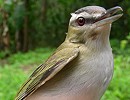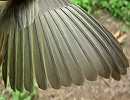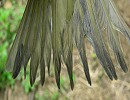|
|
|
Red-eyed Vireo / Vireo Ojirrojo (Vireo olivaceus) |
QUICK TIPS:
| 1) Check
the iris colour - it is grayish-brown on
HY/SY birds, and red on AHY/ASY birds; note that
this is only reliable from summer through March;
eye colour should not be used to assess age during
spring migration.
2) Look at
the upper mandible lining - it is pinkish-gray
to white on HY/SY birds, and dark gray on AHY/ASY
birds; note that this is only reliable from summer
through February; mouth colour should not be used to
assess age during spring migration.
3 In
spring, look for molt limits among the
secondaries - on SY birds there is little
contrast in wear between the tertials and middle
secondaries (all of which are fairly worn), while on ASY birds the tertials are considerably more worn and abraded than the
middle secondaries (but all of which are relatively
fresh).
Species account updated March 2009
Click here for additional photos of this species in the McGill Bird Observatory ID Photo Library |
|
Ageing and sexing overview:
|
Spring: |
ASY - U
Sexes identical. Broad primary coverts with green
edging, often a visible contrast among secondaries at s6/s7. |
|
|
|
SY - U
Sexes identical. Primary coverts narrow with minimal
edging, secondaries relatively worn and uniform in age. |
|
|
|
|
|
SPRING: SY-U (second-year, sex unknown) |
In
spring, all ages and sexes of Red-eyed Vireo have a similar overall
appearance, and it is necessary to view the wings and tail to distinguish
among them. However, sometimes SY birds will retain a somewhat
brownish tone to the iris.
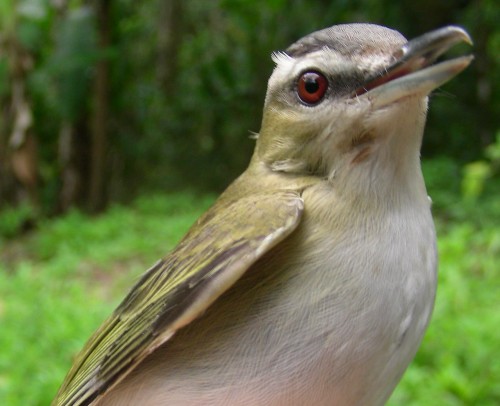
Photo by Marcel Gahbauer, Las Caletas (CR),
April 2008
The primary coverts on SY birds are narrower and more tapered than on
ASY individuals, and with little or no greenish edging. The
secondaries are uniform in age.
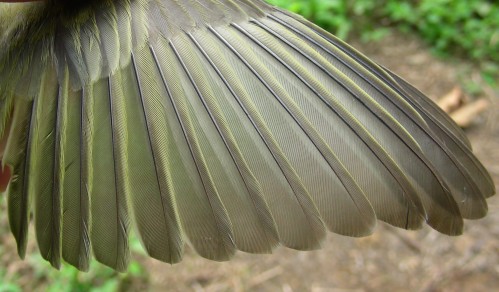
Photo by Marcel Gahbauer, Las Caletas (CR),
April 2008
The rectrices are somewhat narrower on SY individuals than on ASY birds, and often are more abraded by spring (though the appearance of the tail in this photo is mostly due to it being a bit wet).
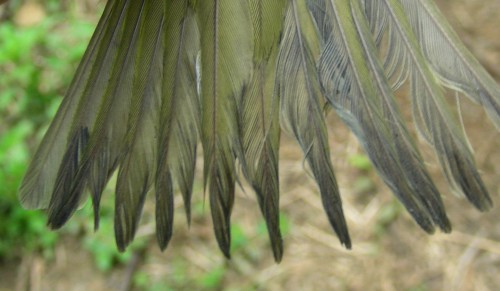
Photo by Marcel Gahbauer, Las Caletas (CR),
April 2008
RETURN TO AGE/SEX
OVERVIEW
|

